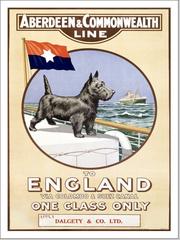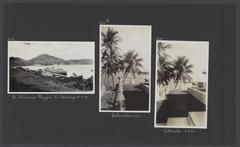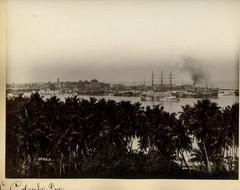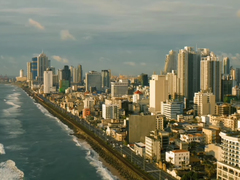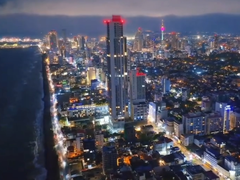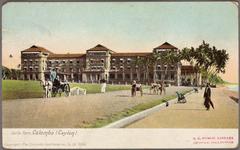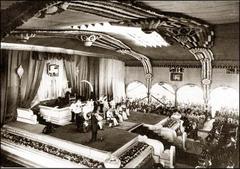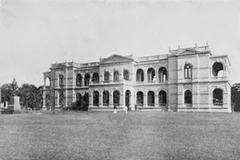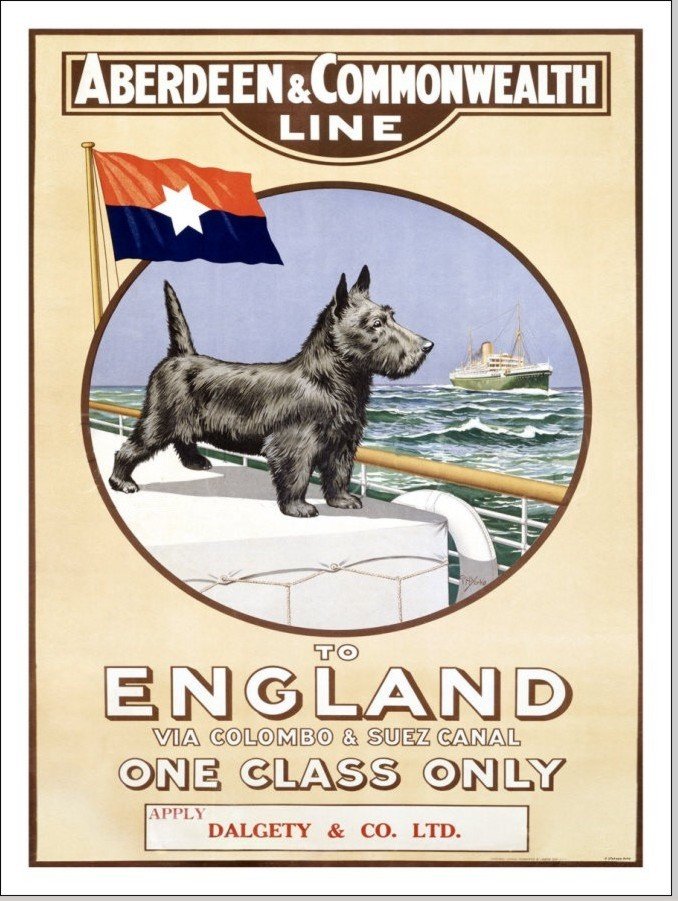
Colombo Visiting Hours, Tickets, and Historical Sites Guide
Date: 14/06/2025
Introduction to Colombo’s Historical Sites and Visitor Information
Colombo, the dynamic capital of Sri Lanka, stands as a testament to centuries of cultural exchange, colonial influence, and modern development. Its strategic location along the western coast has historically made it a crucial maritime hub, attracting traders from Arabia, Persia, China, India, and Europe. This lively metropolis seamlessly blends ancient heritage, colonial architecture, and contemporary landmarks like the Lotus Tower, offering visitors a journey through time and culture. In this guide, travelers will find essential details—visiting hours, ticketing, accessibility, and expert tips—on Colombo’s top historical and cultural sites. For comprehensive travel planning, consult resources such as VisitSrilankan.com, PlanetWare, and the Gangaramaya Temple official website.
Table of Contents
- Early Origins and Strategic Importance
- Colonial Era: Portuguese, Dutch, and British Influences
- Post-Independence Transformation
- Architectural and Cultural Landmarks
- Visitor Information: Tickets, Hours, and Accessibility
- Special Events and Best Times to Visit
- Photographic Spots and Guided Tours
- Modern Developments and Urban Identity
- Multicultural Fabric and Social Significance
- Historical Sites of Interest
- Frequently Asked Questions (FAQ)
- Summary and Visitor Tips
- Sources and Further Reading
Early Origins and Strategic Importance
Colombo’s roots reach back over 2,000 years, flourishing as a vital port along ancient trade routes. The city’s natural harbor facilitated commerce in spices, gems, and textiles, attracting traders from across Asia and the Middle East (VisitSrilankan.com). The Sinhalese name “Kolon thota” (port on the river Kelani) underscores its early role as a gateway for cultural and commercial exchange.
Colonial Era: Portuguese, Dutch, and British Influences
Portuguese Arrival (1505–1656)
Portuguese explorers arrived in 1505, establishing a fortified settlement to secure their trading interests. Their legacy persists in the city’s original street grid and a few remaining structures (PlanetWare).
Dutch Rule (1656–1796)
The Dutch ousted the Portuguese in 1656, constructing robust fortifications and leaving behind distinctive architecture, canals, and churches. Notable examples include the Old Dutch Hospital (now a lively shopping and dining precinct, open daily 10:00 AM–10:00 PM) and Wolvendaal Church, dating to 1749 (Wanderlog).
British Colonial Period (1796–1948)
British forces seized Colombo in 1796, transforming it into the capital of British Ceylon. This era saw the rise of grand boulevards, administrative buildings, and the railway. Highlights include the Old Parliament Building (1930) and the Colombo National Museum (established in 1877 and open Tuesday–Sunday, 8:30 AM–5:00 PM; LKR 2,500 for foreign adults) (VisitSriLanka.info).
Post-Independence Transformation
After independence in 1948, Colombo evolved into a cosmopolitan capital, balancing rapid modernization with preservation of its colonial and cultural heritage (VisitSriLanka.info). Many historical buildings were repurposed for contemporary use, maintaining the city’s unique character.
Architectural and Cultural Landmarks
Colombo Fort and Pettah
The Fort area, developed successively by the Portuguese, Dutch, and British, today forms the city’s commercial heart, featuring colonial-era edifices, modern offices, and the iconic Cargills & Millers building. Adjacent Pettah is famed for its vibrant markets and multicultural character. Pettah Market operates daily from early morning till late afternoon—visit early to avoid crowds (PlanetWare).
Galle Face Green
This vast oceanfront park was originally laid out in the 19th century by the British. Now it’s a lively gathering place for locals and tourists—ideal for evening strolls, kite flying, and enjoying street snacks. Open daily, best experienced in the evenings (SriLankaByCar).
Religious and Cultural Sites
Colombo’s religious diversity is reflected in its array of temples, mosques, and churches. The Gangaramaya Temple, a blend of Sri Lankan, Thai, Indian, and Chinese designs, is open 7:00 AM–8:00 PM daily; entry is free, donations welcomed (Gangaramaya). The Jami Ul-Alfar Mosque, with its red-and-white striped façade, is open to visitors outside prayer times; modest dress is required (Wanderlog).
Museums and Galleries
The National Museum of Colombo, the country’s largest, offers insight into Sri Lanka’s ancient kingdoms and colonial history. Open Tuesday–Sunday, 9:00 AM–5:00 PM; LKR 2,500 for foreigners (Museum.gov.lk). Contemporary art galleries also dot the city, reflecting Colombo’s creative energy.
Visitor Information: Tickets, Hours, and Accessibility
- Colombo National Museum: Tue–Sun, 9:00 AM–5:00 PM; LKR 2,500 for foreigners; wheelchair accessible.
- Old Dutch Hospital: Daily, 10:00 AM–10:00 PM; free entry.
- Gangaramaya Temple: Daily, 7:00 AM–8:00 PM; free entry.
- Wolvendaal Church: Weekdays, 9:00 AM–4:00 PM; donation suggested.
- Jami Ul-Alfar Mosque: 9:00 AM–4:00 PM for visitors; free entry.
Check official websites for up-to-date information before your visit.
Special Events and Best Times to Visit
Colombo’s multicultural fabric shines during major festivals: Vesak (Buddhist), Deepavali (Hindu), Ramadan (Muslim), and Christmas (Christian), each celebrated with vibrant decorations and communal events. The best weather for sightseeing is December–March.
Photographic Spots and Guided Tours
Don’t miss sunsets at Galle Face Green, the kaleidoscopic Pettah Market, or the colonial architecture in Fort. Guided walking tours covering historical sites are widely available and can often be booked online.
Modern Developments and Urban Identity
Colombo’s skyline is rapidly changing, with modern skyscrapers like the 368-meter Colombo Lotus Tower (open daily, 10:00 AM–10:00 PM; tourist entry approx. $20 USD) juxtaposed with colonial landmarks (PlanetWare). The city remains committed to preserving green spaces and heritage sites.
Multicultural Fabric and Social Significance
The city is a melting pot of Sinhalese, Tamils, Moors, Burghers, and others—reflected in its festivals, cuisine, and religious landmarks. Colombo’s inclusive spirit is visible in its communal celebrations and diverse neighborhoods (VisitSrilankan.com).
Historical Sites of Interest
- Colombo National Museum: Extensive collections from ancient and colonial eras (Wanderlog).
- Gangaramaya Temple: Religious, cultural, and architectural gem (Gangaramaya).
- Old Dutch Hospital: Colonial architecture, now a social hub (Wanderlog).
- Wolvendaal Church: Dutch Reformed church from 1749 (Tusktravel).
- Independence Memorial Hall: Monument to 1948 independence (VisitSriLanka.info).
- Jami Ul-Alfar Mosque: Iconic red-and-white mosque (Wanderlog).
- Galle Face Hotel: Historic luxury hotel dating to 1864 (SriLankaByCar).
Frequently Asked Questions (FAQ)
Q: What are the visiting hours for Colombo’s major historical sites?
A: Most sites open early morning and close by late afternoon or early evening. Always check current hours before visiting.
Q: How do I buy tickets for the Colombo National Museum or Lotus Tower?
A: Tickets are available at each attraction’s entrance. Some, like the Lotus Tower, offer online booking.
Q: Are historical sites in Colombo wheelchair accessible?
A: Major sites like the National Museum and Gangaramaya Temple are wheelchair accessible, but some colonial-era buildings may have limited access.
Q: When is the best time to visit Colombo?
A: December–March, when the weather is dry and pleasant.
Q: Are guided tours available?
A: Yes, both group and private tours are widely available and recommended for a deeper experience.
Summary and Visitor Tips for Colombo
Colombo invites travelers to explore a wealth of historical sites, spiritual temples, bustling markets, and green urban spaces. Timing your visit during the December–March dry season, dressing modestly for religious sites, and using trusted transport options will enhance your experience. Festivals offer unique cultural immersion, while guided tours and local cuisine round out the city’s vibrant offerings. For up-to-date details and seamless travel planning, download the Audiala mobile app and check official tourism resources. Embark on your journey and discover why Colombo remains a city where history and modernity thrive side by side.
Sources and Further Reading
- Exploring Colombo: Visiting Hours, Tickets, and Top Historical Sites in Sri Lanka, 2025, VisitSrilankan.com (https://visitsrilankan.com/colombo/)
- Top Attractions in Colombo: Visiting Hours, Tickets & Must-See Historical Sites, 2025, SriLankadestinations.com (https://srilankadestinations.com/top-8-must-visit-places-colombo/)
- Exploring Gangaramaya Temple Colombo: History, Culture, and Visitor Guide, 2025, Gangaramaya.com (http://gangaramaya.com/)
- Exploring the Colombo National Museum: Visiting Hours, Tickets, and Travel Tips, 2025, Museum.gov.lk (http://www.museum.gov.lk/web/)
- Colombo Historical Sites and Attractions, 2025, PlanetWare (https://www.planetware.com/sri-lanka/best-places-to-visit-in-colombo-sri-1-4.htm)
- Wanderlog: Most Historic Buildings and Sites in Colombo, 2025 (https://wanderlog.com/list/geoCategory/837046/most-historic-buildings-and-sites-in-colombo)
- Sri Lanka Tourism Official Website, 2025 (https://www.srilanka.travel)
